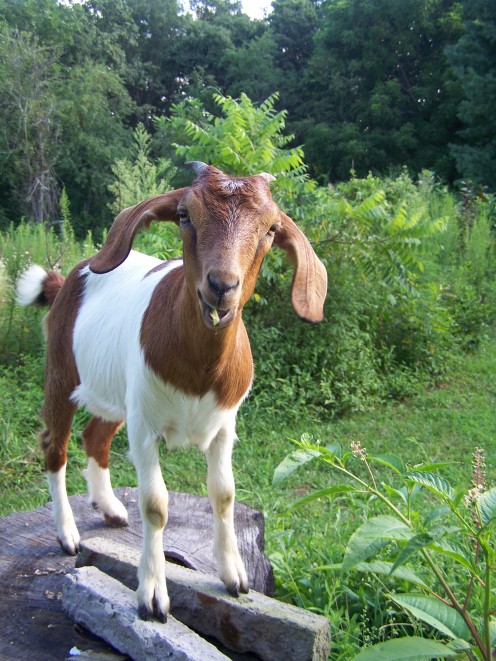How to Tie Goats Out

There are times you may need to tie your goat out. That is okay! I am all for having lush pastures and sturdy fencing, but sometimes that isn't quite possible. Like me, you may have gotten such a great deal on some milk goats, you just had to buy them.
As long as you are careful and provide the following things for your goats, you can tie them out.
Above all, your goat is livestock. It is a living asset to your family. Whether for milk, meat or brush-clearing abilities, most people keep goats for their livestock qualities. We cannot always provide what other people consider "proper" care.
As long as you keep your animals healthy and safe, you are doing a good job.
© Copyright Notice ©
My photographs are mine, taken by me, with my camera. You may use them for personal reasons (desktop backgrounds, personal websites or you can print them for personal use.)
If you choose to use them on websites I require a link back to my HubPages. You may link to my profile or to one of my Hubs.
You may not use them without my permission or for profit.
I sell my art and if you are interested in purchasing it send me a message.
ALL of my articles are MINE and you may NOT use them for anything but reading on my page.
Tying Out Multiple Goats.
Measure the distance between the goats so they can never touch each other. They will get tangled up and could become injured if allowed to get to each other.
When tied out, I let my goats have just enough room to touch noses but not have the chance to become entangled.
Why Tie Out Goats?
For several reasons really. One of the main is to move goats to unfenced areas so they can clear brush or have access to the best browse available. It is also good for spreading their manure into future garden plots.
Watch Your Goats.
One of the bad things about tying a goat out is the possibility of entanglement. Prevent this by keeping the tie out area clear of hard obstacles. When first tying out in a weedy area, check several times a day to make sure the lines are not tangled in weed stems. This is not usually a problem with short, soft weeds.
Stems of strong weeds can catch the ties and goats will wind around them and become stuck. This can cause their death if you are not on top of watching them.
After your goats eat the main part of the large weeds, go in and pull up the leftover stems and trunks.
This really is one of the most important aspects of tying a goat out. Always remember to check on them throughout the day. Everyday, several times a day.
Oil the Stake.
Apply a good lubricating oil to the movable parts of the stake or trolley. This will keep it moving smoothly and prevent some snags.
Use a Sturdy Tie.
Avoid wiry tie outs. They have a bad habit of kinking and binding up. They may also cause terrible wounds if your goats ever become entangled in them. Use a strong, hard-to-knot cord for tying your goats out.
Provide Shelter.
One of the main problems I see with tying goats out is the lack of shelter. A sturdy dog house with a large entry way is perfect for the tied-out goat. Keep the dog house cooler by facing the opening away from where the sun usually shines. Dogloo type dog houses stay pretty cool in hot weather. Make sure water cannot blow into the dog house as goats will get sick from laying in puddles.
Provide Safe Eating and Drinking Areas.
Provide sturdy watering and feeding containers for your goats. The dishes should be placed in a way the goats can eat and drink, but never get tangled up. I use a five-gallon bucket placed where the goats can get to it but not walk around to the other side. This prevents them knocking it over and going without water.
A note on this method, you have to keep the bucket full so they can easily reach the water. They should not have to strain on their collars to reach in and drink.
Always Provide Goat Minerals!
Not sheep minerals. Find a loose goat mineral if you can. The copper in it is essential for healthy goats.








